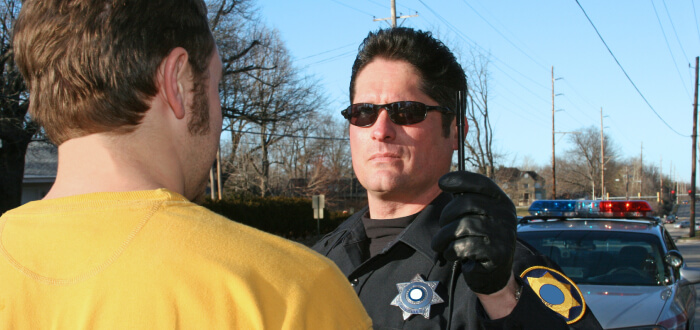
Field Sobriety Tests What They Are and How They Affect Your Case
Over 13,000 deaths occurred in 2021 alone as a result of drunk driving. Adherence to DUI laws could have prevented thousands of such incidents where drivers and other pedestrians got hurt or worse.
Cops know that there are many potential reasons for traffic violations. When an officer pulls someone over, they’ll approach the vehicle to assess the situation, at which point they’ll begin detecting these signs of impairment:
- Slurred speech
- The odor of alcohol or drugs on clothing or breath
- Aggression or lack of restraint
- Mood swings
- Rapid eye movement
- Redness of eyes and pupil dilation
- Coordination issues
Drivers suspected of being under the influence of alcohol or other substances will be asked to undergo a series of field sobriety tests (FSTs).
What is field sobriety testing?
Assessing someone’s sobriety while they’re seated in their vehicle isn’t practical. If DUI is suspected, officers will instruct the driver to exit their vehicle and perform three standardized field sobriety tests. These tests are as follows:
Horizontal Gaze Nystagmus (The Pen Test)
Alcohol can cause blurred vision, which greatly affects a person’s ability to safely monitor their surroundings while operating a vehicle. The Pen Test is simple: the officer will hold a pen vertically in front of the driver’s face and instruct them to focus on the pen as it moves from side to side.
The cop will watch for signs of nystagmus (rapid eye movement), which is a sign that a driver’s ability to focus may be impaired. It doesn’t take a significant amount of alcohol for nystagmus to manifest.
Walking a Straight Line and Turning
The walk-and-turn test requires the driver to walk in a straight line in a controlled manner before turning and walking back.
Failing this test can indicate that alcohol is affecting the driver’s coordination between their mind and body.
Balance Test
Officers may use a one-leg stand to judge a person’s ability to balance. This provides a similar analysis to the walk-and-turn test. Drivers who are unable to maintain their balance could have insufficient reaction time and body control.
Troopers frequently use these sobriety tests to validate a probable cause for suspicion of a DUI.
Field Sobriety Tests and Probable Cause
Officers will add the results of each field sobriety test to their growing list of considerations. If DUI is deemed likely after field sobriety testing, they’ll have probable cause to charge the driver. Because there’s still a degree of subjectivity to FSTs, drivers must also take a breathalyzer test.
A breathalyzer is a device that determines a person’s blood alcohol content (BAC). The legal limit in South Carolina is 0.08.
If a driver is found to have a BAC of 0.08 or higher, they’ll be charged with a DUI. The outcome of the field sobriety tests will be used in conjunction with the breathalyzer results to present the case in court.
How Field Sobriety Tests Hold Up in Court
Those alleged to be driving under the influence will have an uphill climb reversing their charges. Under Frye v. United States, field sobriety tests are considered scientifically valid for determining signs of sobriety. The written assessment of the tests, with or without video evidence, will stand up in South Carolina courts.
As such, defendants will need to attempt to identify errors or inconsistencies in evidence or the method with which the FSTs were conducted. They must give the jurors reason to doubt the accuracy or legitimacy of the evidence presented.
A qualified Spartanburg DWI attorney will understand the key aspects of traffic law and the court process to present as strong a case as possible on your behalf.
Work With a Dependable DWI Attorney
If you’ve been charged with driving under the influence in Spartanburg, SC, The Law Office of Mo Abusaft can provide you with an experienced DWI attorney ready to handle your case. Contact us today to schedule a consultation.
Categories
Civil rights Criminal defense Dui Domestic violence Drug crimes Firm news Mass-torts Murder Theft crimes Traffic-ticket-violations UncategorizedRecent Posts
What Should I Do If I Am Stopped by The Police on Suspicion of DUI? Can Prisoners Challenge Their Conditions of Confinement? Key Differences Between Drug Possession, Intent to Distribute, and Drug Trafficking Charges? What Defenses are Available for a DUI Charge? What are Civil Rights and How Do They Apply in Criminal Cases?